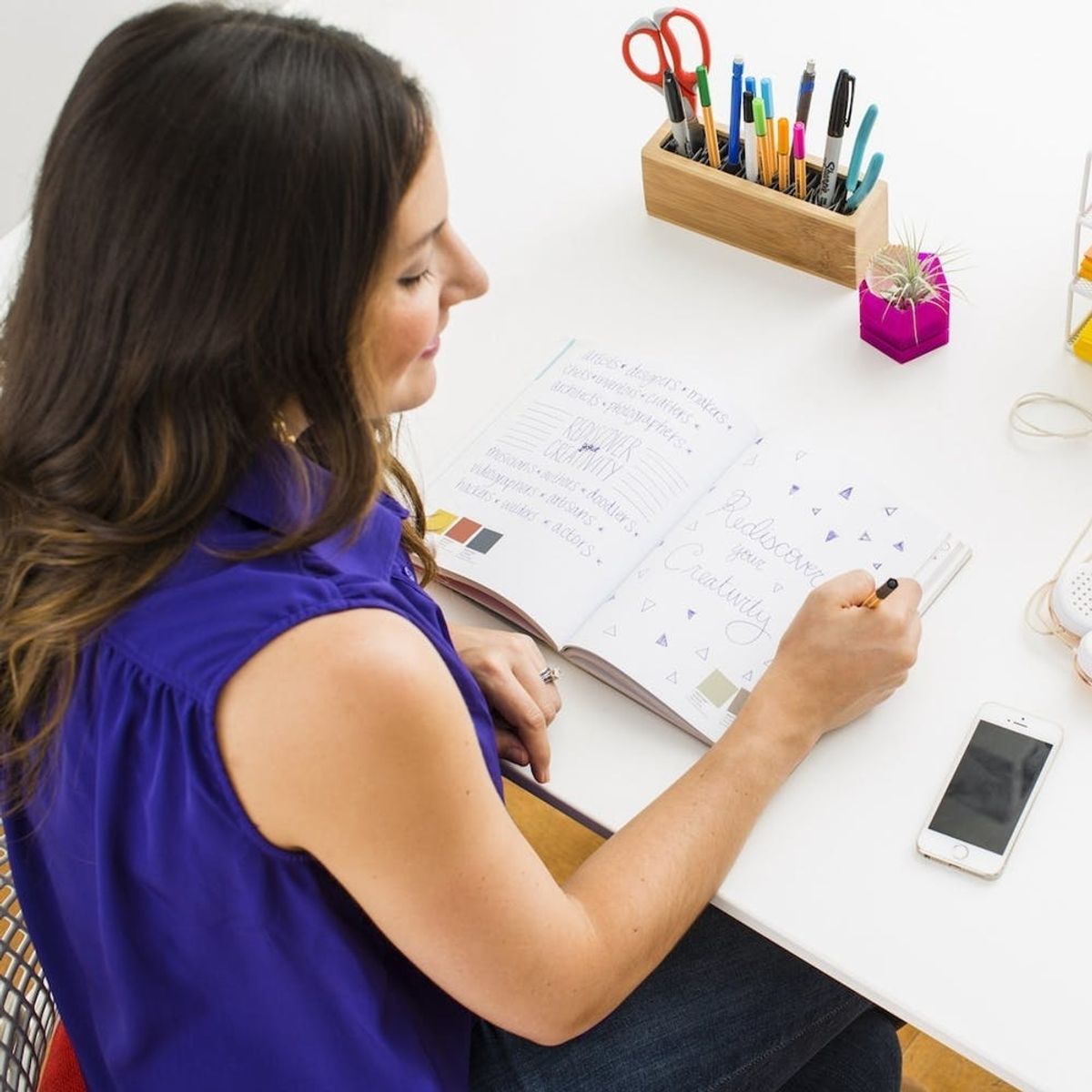Ladies: We’ve got our work cut out for us.
Research Shows Sexism Might Be Stifling Your Creativity at Work

While we’ve got #girlbosses blazing trails in almost every industry, the truth is that a woman’s gender can still be a welcome mat for injustices big and small. Whether it’s the measurable harm of working at a male-dominated job or concerns about losing access to affordable healthcare, it’s pretty common for women to experience sexism in their day-to-day lives. At least you can escape into the inner sanctum of your creative life, where no gender bias can touch you, right? Don’t shoot the messenger, but we come bearing some bad news.
Four studies conducted by a research team at Duke University and published in the journal Psychological Sciencefound that participants consistently perceived men to be more creative than women. In the first study, 80 people were asked to rate how important different personality traits were to creative abilities, like thinking outside the box. The traits most often linked with masculinity (like ambition and daring), stood out, while the more feminine attributes (like cooperation and supportiveness) took a backseat, leaving women at a disadvantage because of the unfounded assumption that they lack what it takes.
The results of the second study are no less disappointing. Here, 169 participants were shown images of the works of architects and fashion designers. Some were told they were looking at the creation of a woman, others of a man. When it came time to judge the architects, those who thought they were looking at the product of a man rated it to be more creative than those who were told the same work belonged to a woman. Interestingly enough, when it came to fashion design, no similar bias existed, presumably — and as predicted by the researchers — because fashion is a designated lady zone.
The remaining studies examined how the gender divide surrounding creativity affects women in the real world, specifically if and how it contributes to the pay gap between the sexes. In the first of these, researchers looked at feedback about executives enrolled in MBA programs from two sources: their supervisors and their direct reports. Not surprisingly, supervisors judged the female execs to be less innovative than their male counterparts, but no such distinction in merit was seen in the reporting. When bosses buy into gender stereotypes, it seems like women get the short end of the stick.
Finally, the research team asked 125 people to read about a male or female manager whose strategies were risky. While the male manager’s plan was described as creative, the female’s was not. In other words, when men took risks, their choices were more likely to be seen as bold or even courageous, while a woman’s similar choices would be considered “risky,” a word that on its own doesn’t inspire confidence.
Looking at the four studies, it is easy to imagine how gender labels might affect a woman’s ability to thrive at work, and not just in the world of big business. “Our research not only points to a unique reason why women may be passed over for corporate leadership positions, but also suggests why women remain largely absent from elite circles within creative industries,” says lead researcher Devon Proudfoot.
What also stings is that given the random sampling in at least two of the studies, we have to assume a healthy chunk of the respondents were women. That means it’s not just men discriminating against women, but also women’s own prejudices working against themselves and others. The good news is that with knowledge comes power. Now that we know what we’re up against, we can do what we do best: Get creative and start working toward changing our own perceptions. And while we dream up ways to address these biases, we can support the work of female artists, designers and thinkers who inspire us to keep expressing who we are, stereotypes be damned.
How do you challenge the biases surrounding creativity? Share your ideas in the comments below.

















